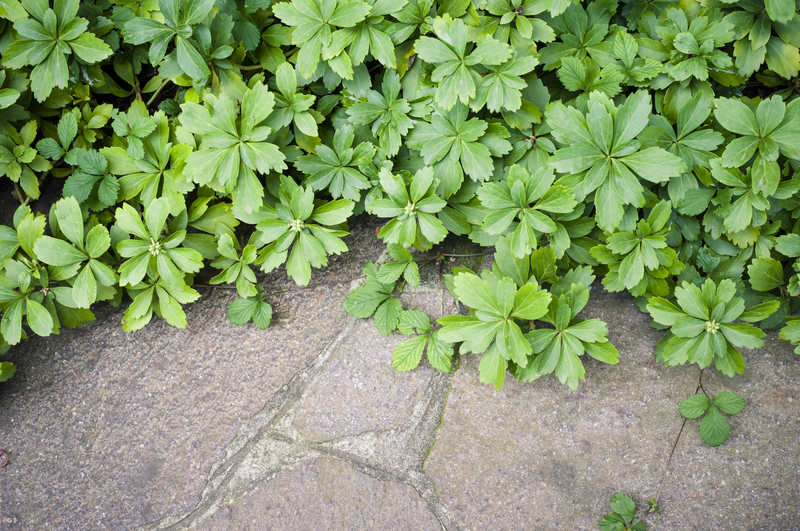Strategies to Manage Excess Wind Impact on Your Garden
Posted on 26/06/2025
Strategies to Manage Excess Wind Impact on Your Garden
Wind is a natural part of our environment, but excessive or persistent wind can be a significant challenge for gardeners. Excess wind can cause physical damage to plants, dry out soil, stunt growth, and even result in crop failure. For those tending to a lush home oasis or productive vegetable plot, adopting practical strategies to manage wind in the garden is essential. In this comprehensive guide, we explore everything you need to know to protect your garden from strong winds and ensure thriving, resilient plant life.
Understanding Wind Impact on Gardens
Before you develop solutions, it's important to understand how wind affects gardens:
- Physical damage: High winds can break stems, tear leaves, and cause branches to snap.
- Water loss: Wind increases evaporation from both leaves and soil, leading to drought stress.
- Temperature fluctuations: Sudden wind gusts can cool plants rapidly or stress them by desiccation.
- Pollination issues: Excessive wind can interfere with pollination by blowing away pollen or damaging flowers.
Awareness is the first step to building a wind-resilient garden.

Key Strategies for Managing Wind in Your Garden
There are multiple approaches to control excess wind effects on your garden. The right mix of solutions depends on your local climate, garden size, layout, and what plants you're growing. Below, we cover the most effective garden wind management techniques available:
1. Plant Effective Windbreaks
Windbreaks are barriers designed to reduce wind speed and protect plants within their sheltered zone. Installing a windbreak is one of the most potent ways to shield your garden from excess wind.
- Hedges: Dense plantings of native shrubs, coniferous trees, or evergreens around your garden perimeter act as natural wind buffers.
- Timber fences: Wooden fencing with small gaps (allowing some air flow) reduces wind more effectively than solid walls, which can cause turbulent eddies.
- Living fences: Growing bamboo, willow, or tall grasses as living screens provides year-round protection and habitat for wildlife.
- Staggered rows: Plant windbreaks in staggered formations for greater impact in larger gardens or open landscapes.
Tip: Place windbreaks at right angles to prevailing winds. The protected area can extend up to 10 times the height of the barrier, so prioritize height and density in your planning.
2. Use Temporary Wind Protection Solutions
If you're dealing with newly planted beds or seasonal garden areas, temporary measures can help until permanent solutions establish.
- Garden netting or wind fabric: Secure durable mesh or purpose-made windbreak fabric to posts around sensitive beds.
- Recycled materials: Strategically place wooden pallets, old doors, or plastic sheeting as makeshift shields during stormy periods.
- Row covers: Lightweight fleece or horticultural tunnels give vegetables and seedlings extra layers of wind protection.
Temporary windbreaks are affordable and versatile, making them perfect for young gardens or rental properties.
3. Optimize the Layout of Your Garden Beds
The orientation and design of your garden beds play a significant role in reducing wind exposure. Here's how to get the most from your layout:
- Position beds parallel to the prevailing wind direction to reduce wind tunnel effects and minimize soil erosion.
- Stack taller crops strategically (e.g., corn or sunflowers) on the windward side of vegetable patches to act as living barriers for delicate plants behind them.
- Use raised beds with sturdy sides to protect root systems from disruptive gusts and soil blowout.
By considering the wind when designing your garden, you can shelter tender plants and reduce the risk of wind damage year round.
4. Mulch and Ground Cover for Wind-Resilient Soil
One of the most overlooked impacts of wind is the dehydration and erosion of topsoil. To combat this, incorporate these ground-level strategies:
- Apply thick organic mulch (e.g., bark chips, straw, compost) to keep moisture in and shield delicate soil from direct wind.
- Establish living ground covers like creeping thyme, clover, or low-growing sedums to create a natural windproof mat.
- Lay biodegradable mats on exposed areas, especially on newly seeded lawns or sloped surfaces vulnerable to wind erosion.
Healthy, protected soil supports robust root systems and helps your garden resist harsh conditions brought on by frequent winds.
5. Staking and Supporting Vulnerable Plants
Some plants, especially tall or top-heavy species, are naturally vulnerable to wind damage. Proactive staking and support can save them from breakage and stress:
- Stakes and plant ties: Use stakes, bamboo canes, or sturdy poles with soft ties to anchor young trees, climbers, and tall flowers.
- Ring supports and cages: Circular cages around perennials like peonies or delphiniums prevent flopping and snapping in blustery weather.
- Trellises or obelisks: For vining vegetables and ornamental climbers, robust frames provide wind-resistant training supports.
Check ties and supports regularly to ensure they are secure but not restricting stem growth - adjust as plants grow or as wind patterns change.
6. Choose and Position Plants Wisely
Not all plants are created equal when it comes to withstanding wind. Selecting resilient species and placing them smartly can greatly reduce garden wind stress.
- Native plants: These are usually well-adapted to local climate and wind conditions, making them a smart choice for exposed sites.
- Compact or low-growing cultivars: Shorter plants offer less resistance and are less likely to snap in high winds.
- Bushy or multi-stem forms: Rather than single tall stems, bushy plant shapes distribute wind pressure for greater durability.
- Wind-tolerant species: Look for plants specifically noted for their ability to thrive in windy areas - such as lavender, juniper, sea holly, and ornamental grasses.
Position the most wind-resistant plants on the windward side of your garden, creating a natural buffer for more sensitive species behind.
7. Maintain Robust Garden Health
Wind-damaged plants recover faster if they are already in excellent health. Help your garden withstand stress by:
- Feeding regularly: Use balanced organic fertilizers to strengthen roots and stems.
- Watering deeply: Focus on fewer, deeper watering sessions to encourage deep root growth that anchors plants against wind gusts.
- Pruning wisely: Remove damaged or top-heavy branches and avoid aggressive cutting right before windy seasons, as this can expose weak points.
Healthy gardens bounce back from weather challenges much faster and experience less permanent damage from excess wind.
8. Build Garden Structures as Wind Shields
Permanent or semi-permanent garden structures can serve the dual purpose of enhancing your landscape and blocking harsh winds. Consider adding:
- Pergolas or arbors: These can be covered in vines to create wind-filtering canopies.
- Garden walls: Short stone or brick walls offer immediate shelter for raised beds or patio spaces.
- Greenhouses and polytunnels: As well as providing a controlled climate, these give the ultimate wind protection for fruit, vegetables, and tender ornamentals.
Using structures creatively not only enhances the look of your garden but also significantly minimizes wind impact.
Frequently Asked Questions on Managing Wind in Gardens
Why is wind so damaging for gardens?
Wind strips moisture from both plants and soil, causes physical breakage, spreads salt and debris, and creates turbulent microclimates that can stress plants. All of these contribute to reduced growth, yield, and aesthetic appeal in affected gardens.
What are the best plants for windy gardens?
Consider native shrubs, sturdy evergreens, ornamental grasses, sea buckthorn, New Zealand flax, rosemary, lavender, and low-growing ground covers. These are tough, flexible, and capable of thriving in exposed positions.
How do I protect young trees from wind?
Stake trees securely for the first two to three years after planting, use a wide soft tie, and ensure the support post is upwind. Planting in groups and surrounding them with tougher shrubs will also help protect young trees until they are established.
Should windbreaks be solid or permeable?
Permeable windbreaks (like hedges or slatted fences) are generally better than solid walls, as they reduce wind speed gradually rather than causing chaotic turbulence on the sheltered side. Aim for 50-80% density for the most effective shelter.

Long-Term Planning for Wind-Resilient Gardens
Managing wind impact on your garden is an ongoing process. Here are important long-term actions:
- Monitor changes: Observe wind patterns throughout the year and adjust windbreaks and planting positions as needed.
- Layer protection: Combine multiple strategies--plant, structural, and cultural--for optimal, year-round defense.
- Encourage biodiversity: Mixed plantings and varied structures create stable microclimates and attract beneficial insects and birds that contribute to overall garden health.
- Continue soil improvement: The healthier your soil, the better your plants can recover after wind stress. Add organic matter and avoid compaction for the best results.
With careful observation and practical wind management efforts, you can transform even the windiest plot into a thriving, productive, and sheltered garden retreat.
Final Thoughts: Creating a Wind-Resistant Garden Sanctuary
Excess wind doesn't have to mean the end of your gardening ambitions. By employing strategic wind management techniques--like windbreak installation, smart garden design, mulching, staking, and planting wise choices--you'll significantly reduce wind stress on your plants.
Every garden is unique, so devote time to understanding your site's specific wind challenges and experiment with a combination of these solutions. Consistent effort and thoughtful design are key to turning a windswept plot into a lush, flourishing haven--no matter the weather.
Start today to future-proof your garden against the whims of the wind--and watch your outdoor space thrive all year long!

